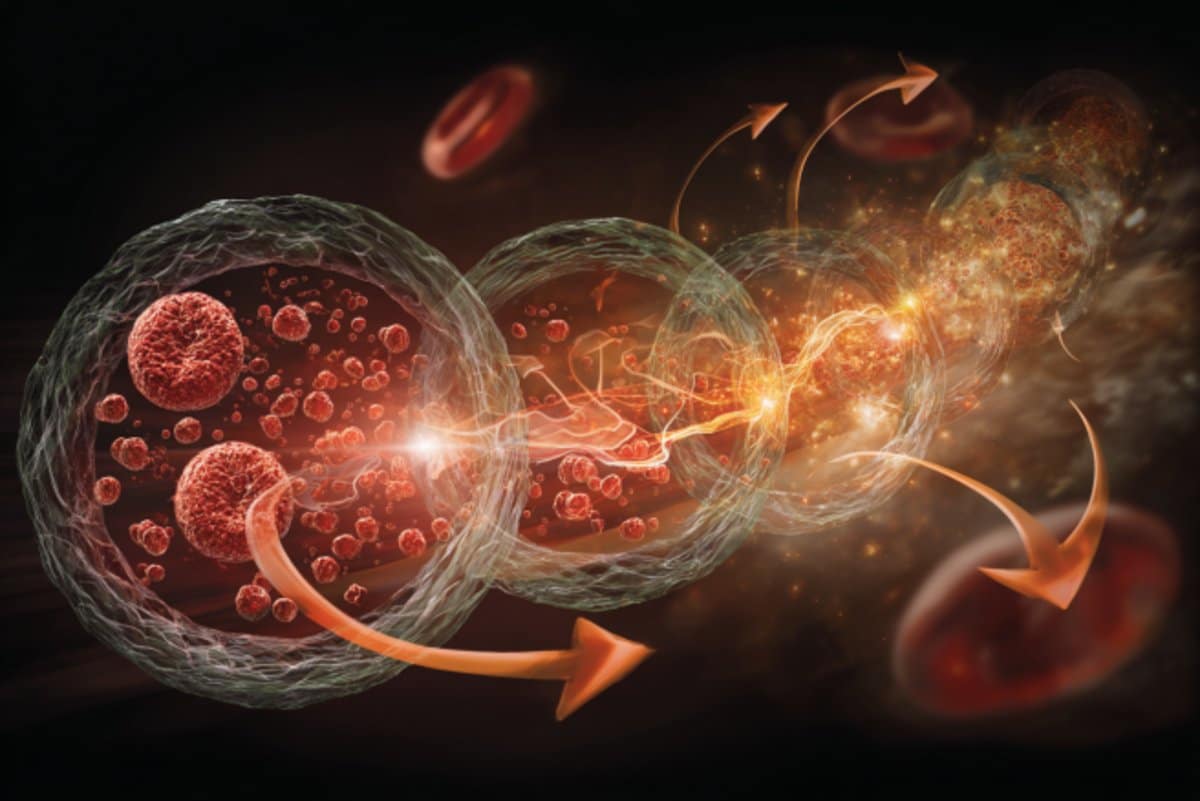SEOUL – New research reveals a groundbreaking discovery in the field of aging, demonstrating that the process is not confined to individual cells but can spread throughout the body via the bloodstream. A protein known as ReHMGB1, secreted by senescent cells, has been identified as a key player in this systemic transmission, impairing regeneration and muscle function in distant tissues.
Breaking: Discovery of Aging Signal Transmission
The study, conducted by Professor Ok Hee Jeon’s team at Korea University College of Medicine, has unveiled that ReHMGB1, a redox-sensitive protein, acts as a molecular messenger of aging. This revelation provides a promising therapeutic target to potentially slow or reverse age-related decline.
Key Facts:
Aging spreads through blood: ReHMGB1 transmits senescence signals from one tissue to another.
Reversible damage: Blocking HMGB1 improved tissue repair and function in aging mice.
Therapeutic potential: Targeting circulating HMGB1 could help treat age-related diseases.
Immediate Impact
Blocking ReHMGB1 with antibodies in mice has shown to reduce cellular aging markers and enhance physical performance post-injury. These findings, published in the journal Metabolism – Clinical and Experimental, mark a significant stride in understanding and potentially mitigating systemic aging.
Key Details Emerge
The research highlights that senescent cells secrete pro-inflammatory factors and signaling molecules, collectively known as the senescence-associated secretory phenotype (SASP), which induce aging in surrounding cells. Over time, these cells accumulate, impairing tissue function.
The study utilized both in vitro and in vivo models to demonstrate how extracellular ReHMGB1, but not its oxidized form, induces senescence-like features across various human cell types, including fibroblasts and muscle cells.
Industry Response
This discovery has garnered attention from the scientific community, given its implications for developing age-related disease treatments. Experts suggest that targeting extracellular HMGB1 could revolutionize therapeutic approaches.
“This study reveals that aging signals are not confined to individual cells but can be systemically transmitted via the blood, with ReHMGB1 acting as a key driver,” said Professor Jeon. “By blocking this pathway, we were able to restore tissue regenerative capacity, suggesting a promising strategy to treat aging-related diseases.”
Background Context
Senescent cells, known for their role in aging, secrete SASP factors that induce paracrine senescence in nearby cells. However, the systemic spread of these signals was previously unclear. Professor Jeon’s team has provided the first evidence of ReHMGB1’s role in this process.
The research was supported by the Myokine Research Center (MRC) and the Ministry of Science and ICT, in collaboration with experts like Professor Irina Conboy of UC Berkeley.
What Comes Next
The findings open new avenues for therapeutic interventions targeting ReHMGB1 to combat aging and its associated diseases. Future research will likely focus on refining these strategies and exploring their clinical applications.
As the scientific community continues to explore these possibilities, the potential to slow or reverse aging-related decline remains a hopeful prospect for both researchers and the public alike.
